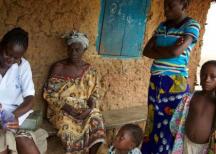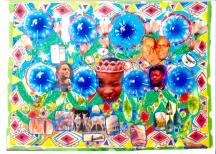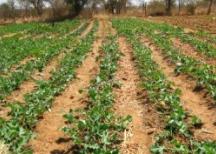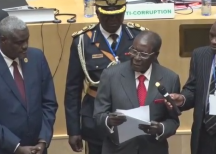
‘South Africa became the regional economic powerhouse that it is today partly on the backs of immigrant labourers from the SADC who helped build the country’s economy. Is it unreasonable for people to want to share in the fruits of what they helped create?’ asks Mandisi Majavu.
At the end of July 2011, the South African government plans to lift the moratorium on deportations to Zimbabwe and will probably start the deportation of all undocumented Zimbabweans living in South Africa.
Given the Minister of Home Affair's stated intent to begin ridding the country of undocumented people from other African countries after she is finished with Zimbabweans, it is more than likely that the Department of Home Affairs (DHA) is going to intensify its crackdown on all undocumented people after July 2011.
The irony is that in certain cases, the DHA is to blame for undocumented people in the country. A recent research study undertaken by the People Against Suffering Oppression and Poverty (Passop) shows that scores of people are turned away on a daily basis from the Refugee Reception Office (RRO) in Cape Town, “rendering them undocumented through no fault of their own.”
Passop monitored the RRO for two weeks between March 28, and April 8, 2011. During this period, 1,659 people were tuned away for various reasons. About 365 people were turned away because there were no forms for them and 363 people were turned away due to border pass issues. Some people were turned away because 1) there were too many people to serve that day, 2) they had no money to bribe officials, 3) they were at the wrong office, or 4) for visiting the RRO on a wrong ‘nationality day’.
It is partly due to the factors highlighted above that the Passop report argues that the RRO in Cape Town is operating “under capacity” in comparison to the numbers of people applying for papers. Instead of penalizing immigrants for something that is beyond their control, the South African government ought to consider extending the concept of the Zimbabwe Dispensation Project (ZDP) to other foreign nationals from the Southern African Development Community (SADC).
The SADC region is moving towards a free trade area. Research shows that the opening up of national economies has largely been accompanied by the increased mobility of labour across borders.
Interestingly, the proposed Protocol on the Free Movement of People in the SADC of 1995 had initially also put forward an “open borders” concept, i.e. SADC citizens having free movement within SADC.
Apart from the fact that the SADC region is moving towards a free trade area, it is worth keeping in mind that immigrants from the SADC countries helped build the South African economy. Research also shows that South African mines (and the South African agricultural industry) depended on cheap foreign labour in order to make profits. In fact, “mining has consistently been one of South Africa's most important industries, one of its biggest employers and the driving force of its industrial economy,” contends Jonathan Crush, the director of the Southern African Migration Programme (SAMP).
SAMP research further shows that throughout the 20th century, at least 40 percent of the mine workforce was non-South African. A research paper published by the Global Commission on International Migration (GCIM) in 2005 points out that by 1970, there were over 260,000 male labour migrants on South African mines. Put differently, this means that hundreds of thousands of male migrants from the SADC countries have spent the greater parts of their working lives in South Africa, argues Crush. These workers came from Malawi, Lesotho, Mozambique, Botswana, Zimbabwe, Zambia, Angola and Tanzania.
It was in recognition of this fact in 1995 that the post-apartheid South African government offered permanent residence to mineworkers from outside of the country who had been working on the mines since 1986.
Crush reports that 26,440 miners applied for permanent residence, but points out that the reason a small number of miners applied was twofold.
Firstly, miners were poorly informed about the first amnesty and had insufficient time to make their applications.
Secondly, the fact that the miners had to have served 10 years to apply is unjust given the 5-year limitation on SADC country citizens applying for permanent residence. If all miners were to apply for a reopened amnesty, the results would be startling. Some 150,000 non-South African miners would be eligible.
Additionally, the GCIM’s research paper reveals that many adults in SADC countries have either parents or grandparents who have worked in South Africa in the past. “In every case, nearly a quarter or more people have grandparents who had worked in South Africa…About a quarter of the people in Namibia and Zimbabwe have parents who had worked in South Africa. So did 41% of Batswana, 54% of Mozambicans and 83% of Basotho.”
It is this history that compels me to argue that the South African government ought to consider extending the concept of the ZDP to other foreign nationals from the SADC region.
Based on the foregoing, people from the SADC countries have political grounds to apply for South African papers that allow them to work and live in this country. Their fathers and grandfathers, after all, were exploited, like all blacks in this country, by a white supremacist regime in order to build the South African economy. In some cases, their fathers and grandfathers paid the ultimate price, dying from pneumonia and other lung diseases on the South African mines.
Perhaps it is worth noting that many people in the SADC region live in poverty and view South Africa as a place with many economic opportunities. Although South Africa has its own problems and challenges, the truth of the matter is that South Africa is the economic powerhouse in the region (some might argue on the whole continent). In a policy brief [PDF"> written for the Economic Justice Network, Dale McKinley argues that SADC member states have a population of about 250 million people and a combined GDP of some US$432bn - 65 percent of which comes from South Africa alone.
Needless to point out, South Africa became the regional economic powerhouse that it is today partly on the backs of immigrant labourers from the SADC who helped build the country’s economy. Is it unreasonable for people to want to share in the fruits of what they helped create?
BROUGHT TO YOU BY PAMBAZUKA NEWS
* This article first appeared on the South African Civil Society Information Service (SACSIS).
* Mandisi Majavu is an independent researcher and a volunteer at People Against Suffering Oppression and Poverty (Passop).
* Please send comments to editor[at]pambazuka[dot]org or comment online at Pambazuka News.
- Log in to post comments
- 4790 reads



































